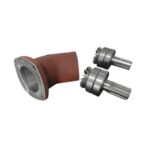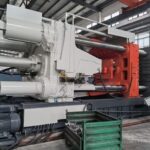Introduction to CNC Machining Techniques
CNC machining revolutionizes manufacturing with precision and versatility. This guide highlights the differences between CNC turning and boring machining, two critical processes in the industry.

Hi, I’m Lai Haijiang, owner of Yongzhu Die Casting since 2004. Passionate about aluminum die-casting? Let’s chat! We craft custom aluminum parts for various industries and offer both manufacturing and wholesale services. Interested in being our overseas agent? Drop me an email with your ideas, and I’ll get back to you swiftly!
CNC Turning: Process and Applications
Definition: CNC turning involves rotating the workpiece while a cutting tool moves in a linear motion. This process is ideal for creating cylindrical parts.
Key Features:
- High Precision: Suitable for achieving tight tolerances.
- Versatility: Can be used on a wide range of materials.
- Efficiency: Ideal for high-volume production.
CNC Boring Machining: Process and Applications
Definition: CNC boring machining is used to enlarge and finish an existing hole. It’s a process of refinement and accuracy.
Key Features:
- Accuracy: Provides precise control over the hole size.
- Finish Quality: Ensures smooth internal surfaces.
- Flexibility: Accommodates various hole sizes and depths.



Comparative Analysis: CNC Turning vs Boring
1. Functionality: Turning is for creating external shapes, while boring focuses on the internal dimensions of an existing hole.
2. Tool Movement: In turning, the tool moves linearly as the workpiece rotates. In boring, the tool is stationary, and the boring head rotates.
3. Application Scope: Turning is more versatile for different shapes, whereas boring is specialized for improving hole quality.
Advantages and Limitations
CNC Turning: Advantageous for mass production of cylindrical parts but limited in creating internal features.
CNC Boring: Excellent for precision internal sizing but not suitable for external shaping.
Making the Right Choice
Selecting between CNC turning and boring depends on the part requirements, precision needed, and the production volume.
Conclusion
CNC turning and boring machining are integral to modern manufacturing, each serving unique purposes. Understanding their differences aids in choosing the right process for specific machining needs.
Let’s chat! Drop me an email with your ideas, and I’ll get back to you swiftly!

















